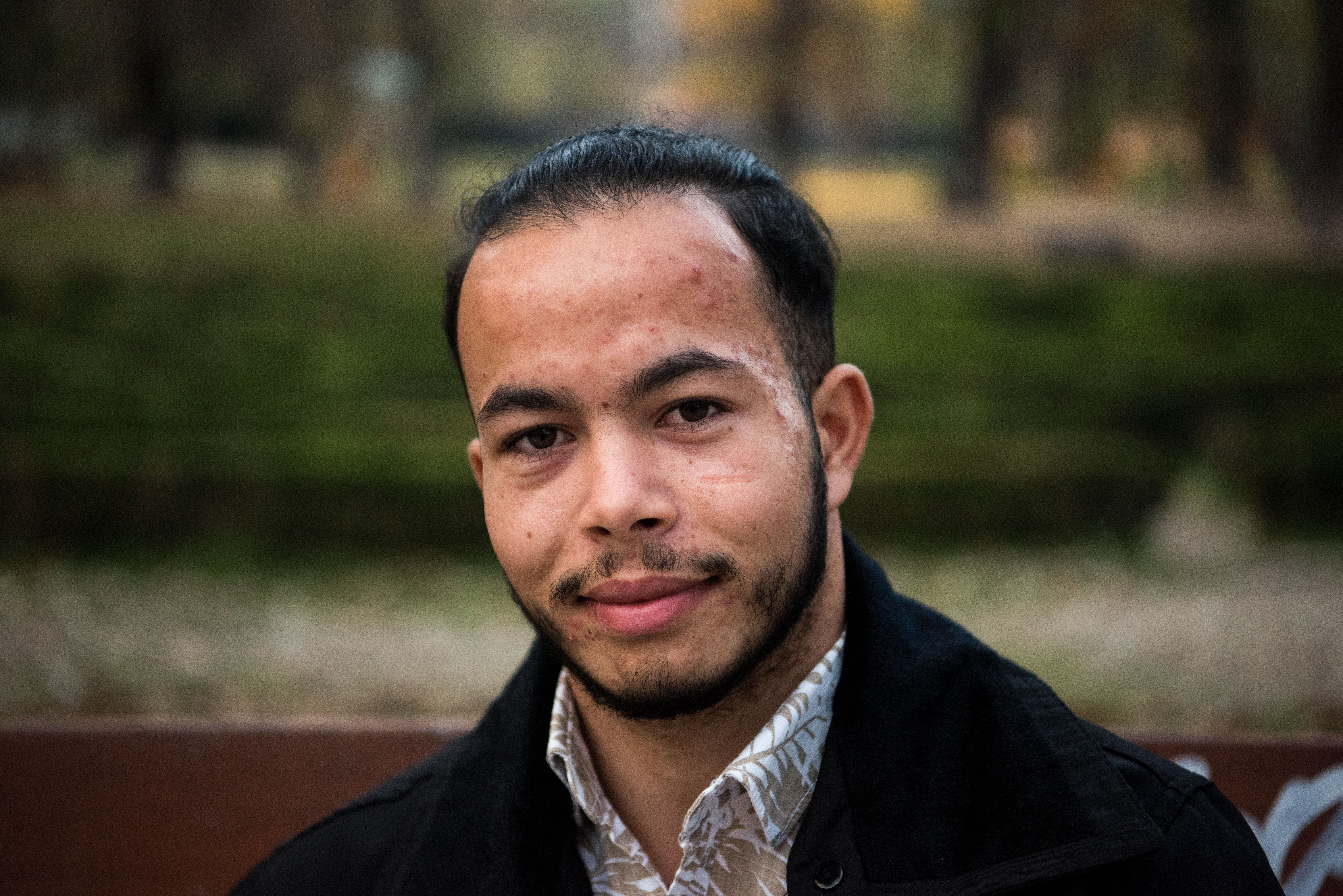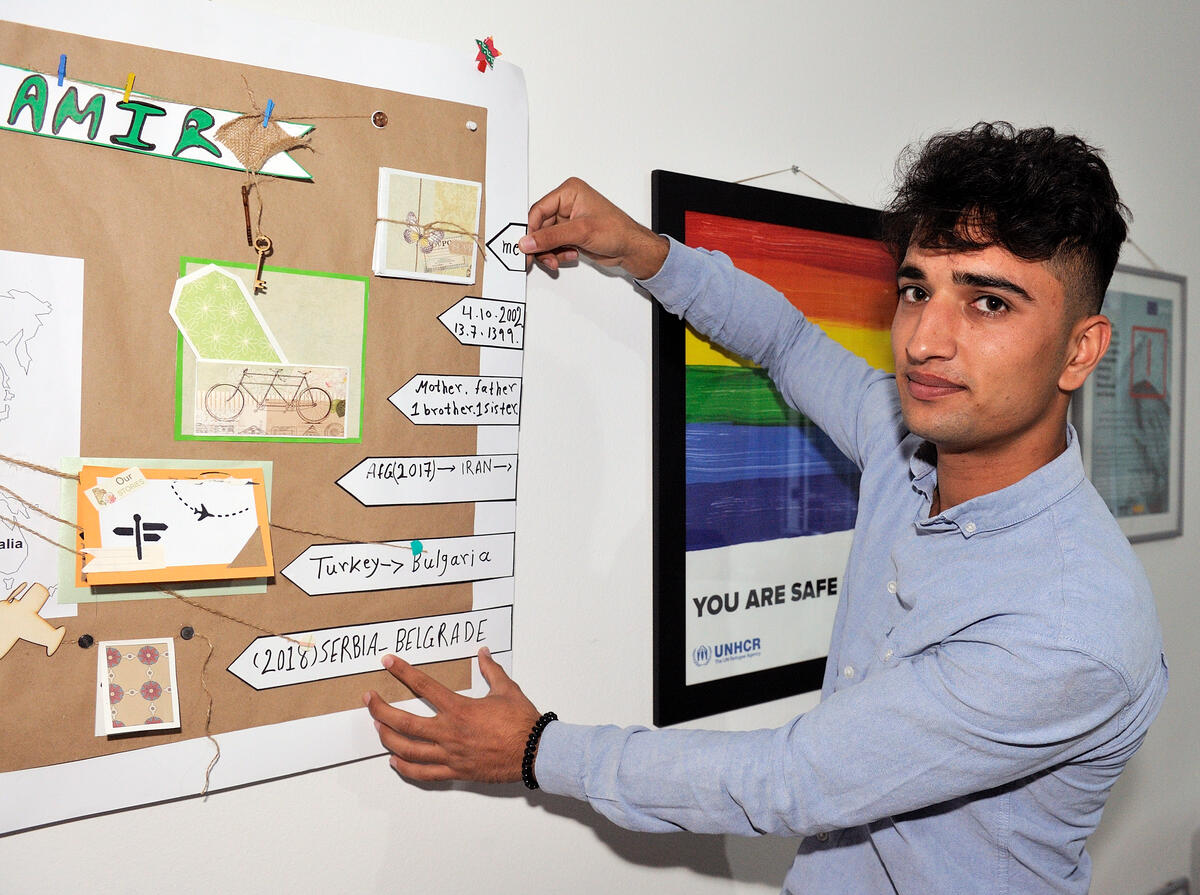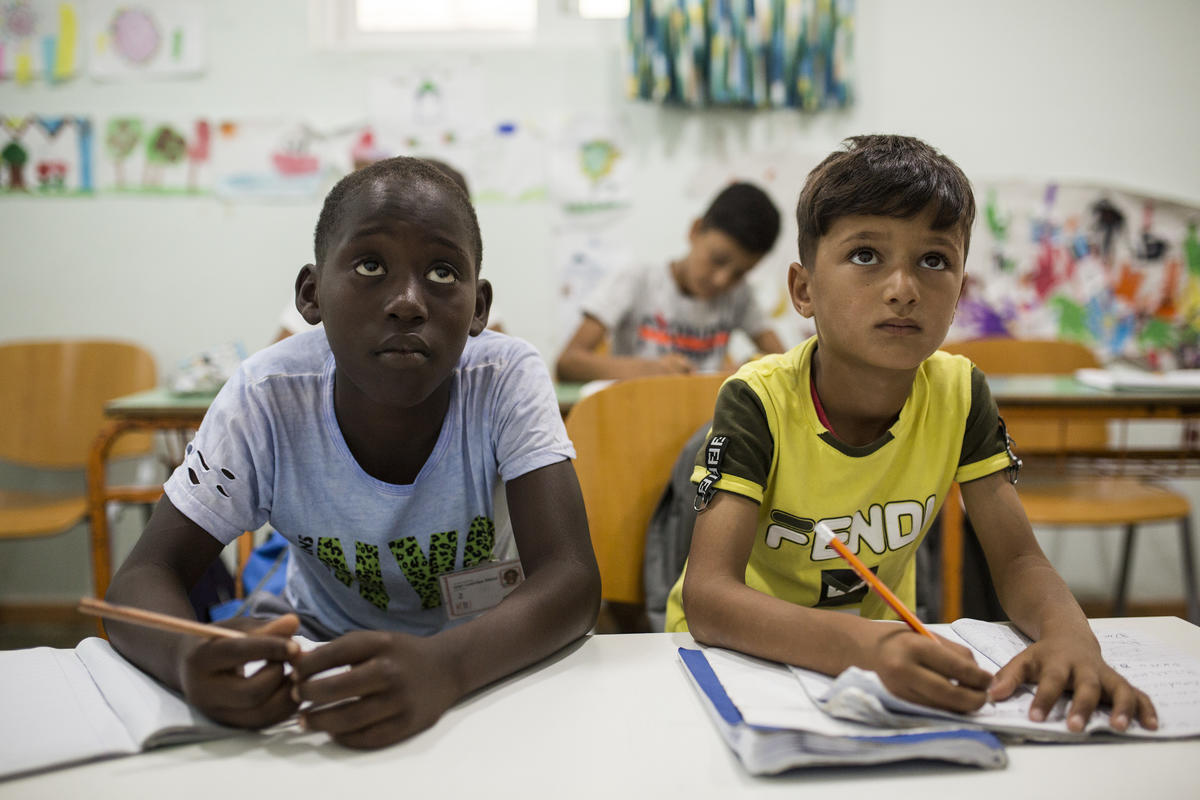Kosovo Crisis Update
Kosovo Crisis Update
The humanitarian evacuation programme for refugees from Kosovo will be suspended at the beginning of July, with the exception of those in need of special medical care.
The programme of UNHCR and the International Organization for Migration began in early April to relieve the pressure on the FYR of Macedonia posed by the arrival of large numbers of refugees from Kosovo.
In view of UNHCR's plans to begin organized repatriation to three locations in Kosovo next week, and in light of the successful deployment of the international security force in Kosovo, there is no longer a need for humanitarian evacuation to continue.
More than 89,900 refugees have been evacuated to 29 countries since the programme began in early April. UNHCR is urging receiving countries outside the immediate region of Kosovo to continue for the time being to host the evacuees, as well as the many other Kosovar refugees and asylum seekers they have received, to enable the return programme to focus initially on the refugees and displaced persons in Albania, the FYR of Macedonia, and Montenegro.
Hundreds of thousands of Kosovo Albanians have sought asylum in European countries over the past decade. Since the outbreak of conflict in Kosovo in March 1998, around 146,000 citizens of the Federal Republic of Yugoslavia have applied for asylum throughout Europe, the vast majority of whom are Kosovo Albanians. Germany and Switzerland have been the main receiving countries, with each taking in around one quarter of all the Kosovars seeking protection.
Kosovo
As caravans brought back into Kosovo record numbers of spontaneous returnees, aid workers struggled to find shelter for them in war-devastated villages and to help victims of land mine accidents.
UNHCR on Friday morning dispatched convoys carrying blankets, mattresses, tents, plastic sheeting and hygienic kits from Skopje to three places in Kosovo. Five trucks went to Pec, five to Prizren and six to Pristina. On Thursday, five UNHCR trucks of non-food items went to Pristina and two to Urosevac.
In Pec, a group of 145 returnees from Montenegro went to the UNHCR office on Thursday asking for tents, a reflection of the scope of the destruction in the western town that used to be home to some 68,000 people. UNHCR and its main partner there, Mercy Corps International, have opened six relief distribution points in the area.
But even as returnees crossed into Kosovo from Montenegro across the Mountain of the Damned and looked for shelters, Serbian houses burned in Pec. It was unclear who was doing the burning - the scores of Serbs leaving each day fearing an uncertain future and not wanting to leave dwellings intact for Kosovo Albanians to move into, or Kosovars seeking revenge.
Mine strikes continue. On Thursday, two people were wounded by land mines in the Pec area and one later died of injuries. In a separate incident, a man was wounded by a grenade thrown by an unknown person.
UNHCR receives daily reports of mine accidents, but no compilation has yet been made on exactly how many have been killed or maimed. Many incidents go unreported or unconfirmed.
Security remains a major problem in many areas. A UNHCR team sent to open an office in Kosovska Mitrovica on Thursday reported the northern Kosovo town was "a ticking time bomb." The team reported that one side of the bridge is completely Serb and other Albanian. On the Albanian side, life is slowly coming back but that part of town is badly destroyed and some parts were bulldozed. Tension is high.
On the Serb side there are reportedly 10,000 residents plus 1,200 internally displaced Serbs from other areas. The KLA commander in Pec said there are also 2,000-3,000 Albanians still living in the Serb area, scattered in seven villages. There is a functioning hospital on the Serb side of town. However, Albanians are afraid to go there alone, and the KLA commander has asked for KFOR escort for patients.
The French KFOR contingent is allowing Serbs to come to the Kosovar side, but considers it unsafe for Kosovars to go to the Serb side without escorts because of several violent incidents recently. There is also no bakery on the Albanian side. Some Kosovar women who had gone to the Serb side to buy bread were reportedly beaten.
Albania
On Thursday, a record number of 25,700 returnees crossed to Kosovo through Morini in the northern Albanian town of Kukes. Overnight and early Friday, border monitors report around 5,000 more had gone back through Morini.
Additional numbers, still to be confirmed, crossed through the Qafe Prushit crossing point between Krume and Djakova, despite repeated warnings from the Albanian authorities that this area is mined. Two additional border crossing points further west, Qafe Morini and Padesh in Tropoje district, have reportedly also been used by several hundred returnees. UNHCR and the Albanian authorities continue to tell refugees that only the Morini crossing point is considered safe from mines.
Since 15 June, more than 175,000 refugees have returned to Kosovo, most of them previously sheltered in Kukes. Now returnees are coming from southern Albania, mainly from Durres, Korce, Elbasan, Puke, Peshkopi, Shkodra, Mamuras and Tirana.
The returnees are renting mini vans, trucks, container lorries and taxis. Some of the trucks which crossed on Thursday were loaded with cars and passengers and one even carried a horse.
The flow of returnees has been unchecked by reports of land mine incidents. On Thursday, a mine-clearance specialist of the Albanian army was injured while trying to defuse an explosive device. Two children were reportedly killed by a land mine near the border inside Albania.
FYR of Macedonia
Around 19,000 refugees returned from the FYR of Macedonia to Kosovo on Thursday, bringing the overall count since last week to more than 116,000.
Also on Thursday, UNHCR briefed visiting British Foreign Minister Robin Cook on humanitarian relief operations in the region.
UNHCR Skopje continued to dispatch aid convoys directly to regional distribution centres in Kosovo.
Meanwhile, humanitarian relief airlifts and overland convoys continued to replenish stocks in Skopje. On Thursday, eight trucks transported tents and blankets flown to Skopje airport to warehouses in the capital. Similar items were brought in by trucks travelling overland from Greece.
Republic of Montenegro
Returns from Montenegro are gathering momentum. More than 4,000 Kosovars went back from Montenegro to Kosovo on Thursday. So far, 8,000 Kosovars have returned from Montenegro, with more expected to follow quickly. Many of the returnees had been staying with host families in Ulcinj. Among those who went back on Thursday were 170 Kosovar doctors and their families. UNHCR has appealed to professionals to return and help rebuild Kosovo.
Kosovo Serbs continue to arrive in Montenegro with 234 entering on Thursday. Since 9 June, around 19,000 Serbs in Kosovo have fled to Montenegro. About half of the number proceeded to Serbia.
UNHCR-IOM Humanitarian Evacuation Programme
On Thursday, 350 refugees left Skopje for the USA, bringing the total moved out of the FYR of Macedonia under the programme to 89,982. The programme is now winding down.








